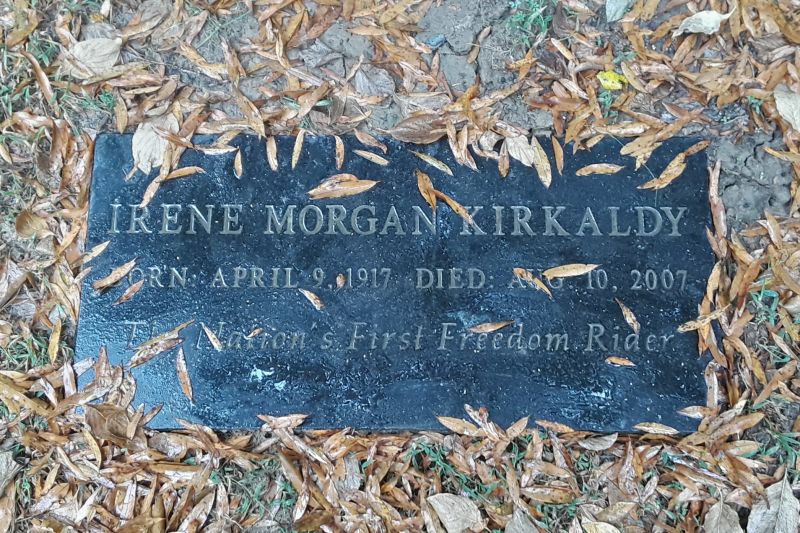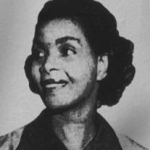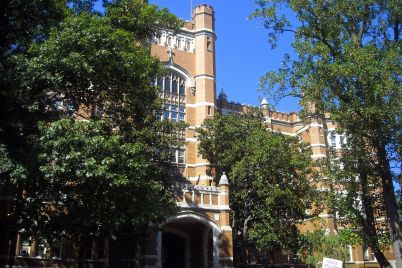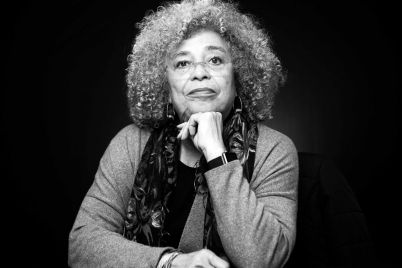Irene Amos Morgan was a defense contractor on the production line for B-26 Marauders in 1944. [Photo: Ser Amantio di Nicolao – CC BY-SA 4.0]
BY KEISHA BELL | Visionary Brief
How many have been overcome with the feeling of, “Not today!”
On any other day, you would have a little more patience to deal with foolishness, but on this day, it simply is not going to happen. All that you want is to be left alone.
On this day, she was not left alone.Meet Irene Amos Morgan, a defense contractor on the production line for B-26 Marauders in 1944. She lived from April 9, 1917, through Aug. 10, 2007.
Morgan, later known as Irene Morgan Kirkaldy, was in her 60s when she enrolled at St. John’s University in New York City. Proving that you are never too old to pursue and achieve your goals, she received her bachelor’s degree at the age of 68. Not stopping there, five years later, Morgan earned a master’s degree in Urban Studies from Queens College. It was Morgan’s perseverance in the face of racial injustice, however, for which she is more widely remembered.
On July 16, 1944, Morgan boarded a Greyhound bus in Virginia to return to her home in Maryland. Initially, she sat next to another African-American woman who was carrying an infant. At that time, an African American could not sit next to or across from a Caucasian passenger. There were, however, no designated “black” or “white” seats on the bus.
In Middlesex County, Va., a white couple boarded the bus, and the bus driver ordered Morgan and the woman she sat beside to surrender their seats. Immediately, the other woman retreated to the back of the bus with her infant. Morgan, on the contrary, refused to move.
The bus driver got off the bus and got a sheriff who presented Morgan with an arrest warrant. On that day, Morgan was not in the mood to follow Jim Crow laws. She tore up the warrant and threw it out of the window. Imagine being on that bus. Can’t you hear her thoughts screaming, “NOT TODAY!”
When the sheriff touched her to pull her out of her seat, she kicked him in the groin. He exited the bus, and a different sheriff got on. A fight ensued, and reportedly, Morgan reflected, “We were both pulling at each other. He said he would use his nightstick. I said, ‘We’ll whip each other.'” Morgan was arrested after the second sheriff got a deputy. She was charged with resisting arrest and violating Virginia’s Jim Crow transit law.
On October 18, 1944, Morgan agreed to pay a $100 fine for resisting arrest at her court hearing but refused to plead to the segregation violation. Virginia’s state law imposed racial segregation in public facilities and transportation. Morgan, however, was traveling on an interstate bus that operated under federal law and regulations. The NAACP Legal Defense Fund took her case.
In 1946, in a U.S. Supreme Court landmark decision, the Court ruled that the Virginia law was unconstitutional, as the Commerce Clause protected interstate traffic. Morgan won. Still, neither Virginia nor other states observed the ruling, and it was not enforced until decades later. Her bus ride home did not end there.
Morgan’s courageous act and court decision inspired the 1947 Journey of Reconciliation. This was when 16 activists from the Chicago-based Congress of Racial Equality (CORE) rode on interstate Greyhound and Trailways bus lines through the Upper South to test the enforcement of the Supreme Court’s ruling. Routinely, nothing happened to them in Virginia, but once in North Carolina, they encountered arrests and violence. The 1947 Journey of Reconciliation inspired the highly publicized Freedom Rides of 1961, also organized by CORE.
Who would have thought that her bus ride home would expand the practice of freedom of seating — for all? Some could never imagine it. Not restricted by social norms, Morgan could.
Keisha Bell is an attorney, author, and public servant. www.emergingfree.com










